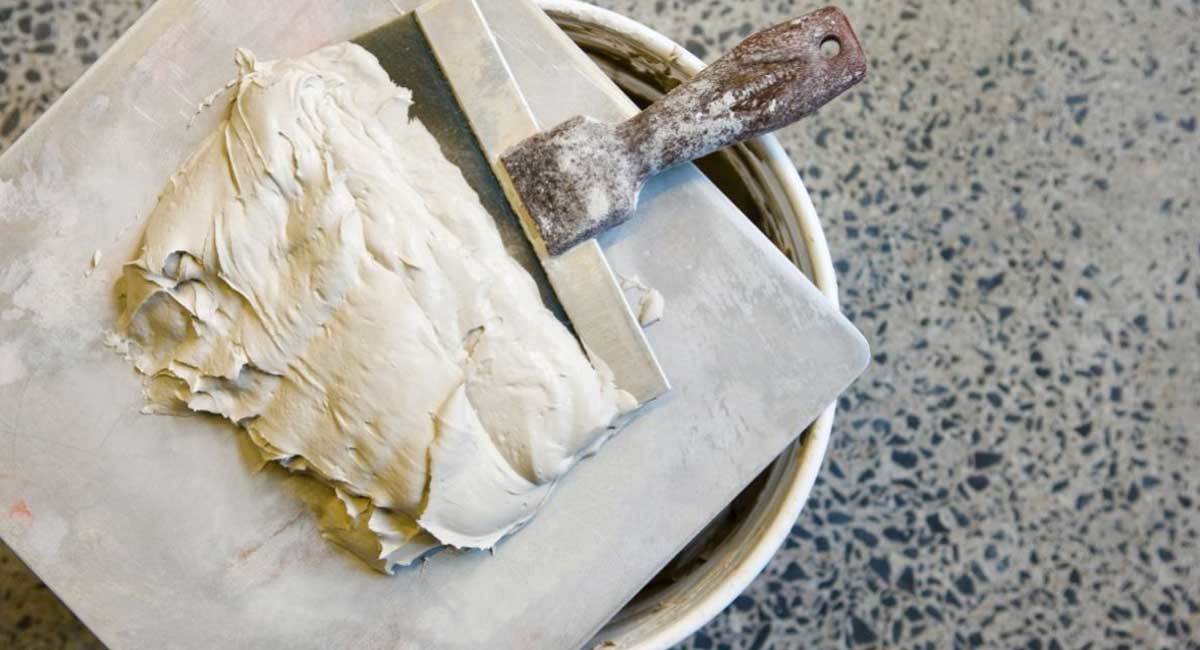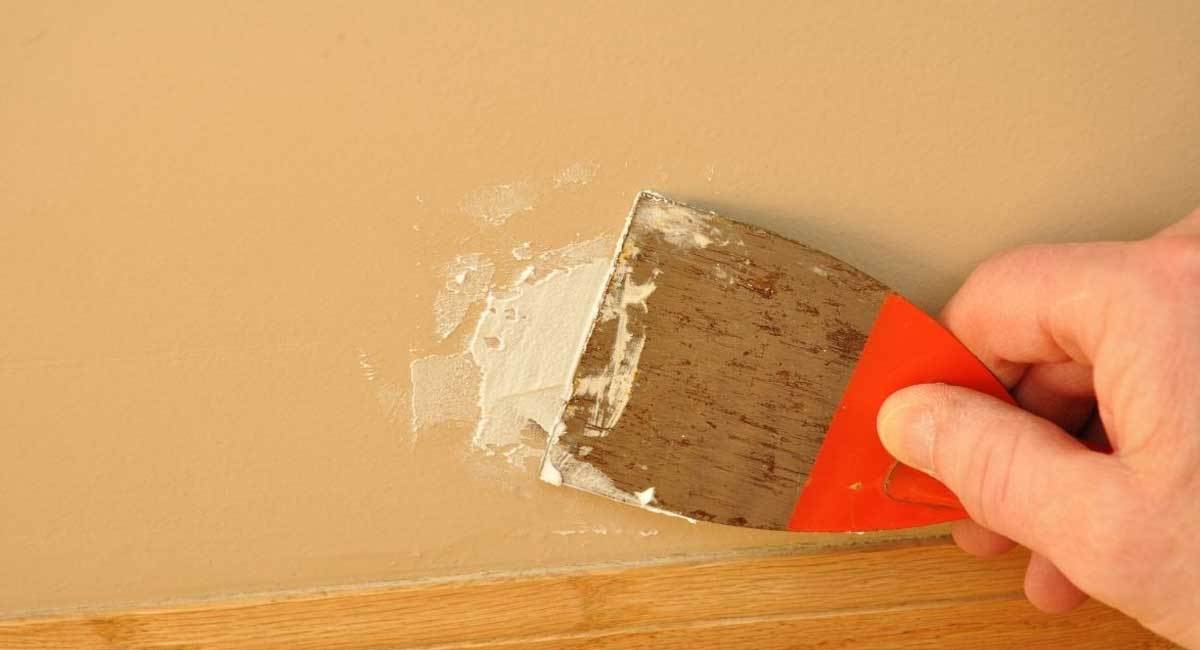The Difference Between Spackle and Joint Compound Explained
Although spackle and joint compound might look the same, have a similar texture, and work in similar ways, there are some differences between the two that make them suitable for different types of work.
The number of similarities between the two often cause them to be confused or used interchangeably, but there are actually a lot of differences between the two. It’s not about which one is better, as they both have their advantages, but it’s about picking the right one for your specific requirements.
Coming with a thick, white, paste-like consistency, both spackle and joint compound are used for drywall projects. In this article, we’ll outline the difference between spackle and joint compound so that you will understand better which one to pick up the next time you have to fix your drywall at home.
Parameters for Differentiation
While the similarities between spackle and joint compound come in the form of looks and color, the differences appear in other forms. The factors that differentiate the two are mentioned below.
- Ingredients
- Behavior after use
- Ease of use
- Market availability
- Cost
- Types of projects
- Consistency
- Types
In the following sections, we’ll discuss spackle and joint compound and the differences between the two based on these parameters.
Joint Compound
Joint compound is also known as drywall mud or simply mud. The name mud comes from the consistency of joint compound, which makes it possible to spread easily. Joint compound is mostly used in bigger projects as compared to spackle.

Ingredients
The main components of joint compound are gypsum and limestone. Other materials that can be found in joint compound are clay, mica, perlite, and starch. It’s mixed with water in a specific proportion that makes it easy for it to be used and gives it its spreadability.
The ingredients used in drywall joint compound can be a cause for health concern while sanding, which is why it’s recommended to use it with a mask or a respirator. You might be exposed to dust, tacl, calcite, mica, gypsum, or silica with the sanded dust. This can cause irritation of the eyes, nose, throat, and respiratory tract.
Behaviour After Use
When any wet material is applied in home projects, some shrinkage should be expected by the time it dries. With joint compound, the amount of shrinkage is relatively high. This means that it shrinks more than spackle, and you have to ensure that you apply multiple coats if you’re trying to fill up large gaps.
Ease of Use
Joint compound is easy to use and sand. However, the drying time can be up to 24 hours, which means that you’ll have to wait for a day before you can sand it into a smooth surface or paint over it. If you’re using this over boards, tape can be used at the seams and then covered with the joint compound. This makes it easier for use on large projects.
Market Availability
When it comes to being sold in the market, joint compound is usually available in bulk. This is because it’s designed to be used on large projects, which means that it’s usually splattered on and then smoothed over.
You can find joint compound in the market in both premixed and original conditions. The premixed version is easier to use. However, some water still needs to be added in order to give it the right consistency for applying on your project. About 1 quart of water added to a 5 gallon bucket of joint compound will give you the best experience while using it.
Joint compound is also available in powdered form, where you can mix it yourself until it reaches the consistency you need. It’s cheaper than premixed joint compound, lasts longer when not in use, and is immune to freezing if you live in colder conditions.
However, it can be difficult to mix and will need extra tools for the specific purpose. You cannot just dissolve it with a tool you have lying around in your garage.
Cost
The price of joint compound is also affected by the amount it’s used in. Because it’s often used in bulk, joint compound is relatively cheaper than spackle. Knowing what kind of material is more suited to the needs of your project is a good way of understanding and reducing the costs you will incur.
Types of Projects
As mentioned before in this article, if you have a large project, like fixing an entire panel of drywall, joint compound is the better option to go for. It’s sold in bulk for exactly this kind of work. Faster patching up of larger areas by using large quantities is the kind of work that suits joint compound well.
Joint compound is also used with paper or fiber joint tape to seal joints between drywall to create a seamless base for paint on interior walls. You can learn more about this by checking out this article on joint compound.
Consistency
The consistency of joint compound depends upon the amount of water you mix in it. It’s available in a powdered form or a premixed form, but the consistency can vary depending on your requirements.
Relatively speaking, however, joint compound has a thinner consistency than spackle because of its uses. When working on large projects, it’s important to have a more fluid material that can be used to cover large areas quickly.
Types
Joint compound has some subtypes that can be used for different projects or for different stages in the same project. Some of these types are mentioned below.
All-Purpose Compound
All-purpose joint compound is a type of premixed joint compound. It’s sold in buckets and can either be used directly or by mixing a small amount of water in it to achieve the required consistency.
However, this compound has a slow drying time, which means that you’ll have to wait until it dries over to put on a new layer. It’s also not the strongest type of joint compound. For this reason, other layers might have to be added on top of it.
Topping Compound
After the drywall is taped and a few coats have been applied, the topping compound can be applied on top of it. It’s easy to sand and gives a smoother finish, making it ideal for use after the first few coats of taping compound.
Taping Compound
This type of compound is used in the first phase of finishing drywall joints. It’s quite difficult to sand, which is why topping compound is used on top of the taping compound layer for a better finish.
Quick-Setting Compound
Quick-setting compound is also known as setting compound. It gets its name from its ability to dry out quite quickly, making it ideal for projects where you have to apply multiple layers on the same day. If you know what you’re doing and you’re in a time crunch when it comes to finishing a project, you can use a quick-setting compound, even in damp conditions.
Spackle
Unlike joint compound, which is used in large quantities for large projects, spackle is more suited for smaller projects and faults in walls. You can learn more about spackle by checking out this article on spackling paste.

Ingredients
Spackle is made of gypsum powder mixed with some binders in order to give it its consistency. Conventionally, spackle used to be made only of ground up limestone, but the formula has been adjusted to make it easier to use. You can now obtain a lightweight spackle option that consists of materials like vinyl, acrylic plastic, or silicate.
Behavior After Use
While joint compound can come with a lot of shrinkage when it dries, spackle doesn’t suffer from any such issues. This ensures that you don’t have to apply multiple layers when you’re working with spackle.
Ease of Use
Besides offering low shrinkage, spackle is also much easier to use as compared to joint compound. This is because the chemical structure and consistency of spackle make it easier to smooth out. Another reason is because spackle is used in smaller quantities on smaller areas, making it easy to maintain.
Market Availability
While joint compound is used in large quantities and sold in bulk, spackle is only used for smaller projects. For this reason, it’s sold in small quantities.
Spackle also mostly comes in a premixed form. While you can get a powdered version if you look for it, most people go with the premixed can because of the convenience and the ease of use it provides.
Cost
Spackle is definitely more expensive than joint compound if you calculate the per unit cost. However, this isn’t really a fair comparison.
While you might need to use a lot of joint compound when you’re working on a large project, you will only use a tiny amount of spackle when you’re fixing damaged walls. This means that the overall cost of joint compound might exceed that of spackle, depending on the project that you’re undertaking.
Types of Projects
Spackle doesn’t have the spreadability of joint compound, but it offers low shrinkage and won’t crack against environmental elements. Therefore, it can be used very effectively when it comes to projects like fixing holes in the wall caused by nails or small impact damage.
If you have kids at home and they’re used to roughhousing, you’ll know what I’m talking about. Spackle can easily and quickly fix the damage in your home.
Consistency
Spackle is much thicker than joint compound. You cannot use it for larger projects like patching up a whole wall as it doesn’t have much spreadability.
Types
Like joint compound, spackle comes in multiple forms.
Lightweight Spackle
With the presence of adhesives and sodium silicate, lightweight spackle is used only for quick fixes. It cannot be sanded effectively, which makes it suitable only for very small projects.
All-Purpose Spackle
This is the most similar material to joint compound and can be used for cracks and holes in walls that are larger and cannot be sorted with a quick fix.
Acrylic Spackle
If you’re looking for a flexible material that can be used in layers, acrylic spackling compound can be used in multiple ways. An advantage of this is that it can be used with drywall, stone, brick, wood, or plaster.
Epoxy Spackle
Epoxy spackle is a type of wood glue that can be used as a filler for holes and imperfections. You can learn more about this by checking out our other article on types of wood glue!
The Bottom Line
When you’re working with drywall, all thick white pastes might look the same. However, it’s important to know the difference between spackle and joint compound depending on the project and its requirements.
Joint compound is cheaper, thinner in consistency, used in bulk, and has a high level of shrinkage when it dries. For large scale projects including multiple panels of drywall, joint compound is the right choice to make.
Spackle is relatively more expensive, thicker in consistency, used in smaller amounts, and has less amount of shrinkage when it dries. For small projects that involve fixing faults, spackle is the right choice to make.
We hope that this article has helped you make an informed choice regarding which material to choose when you’re fixing something in your home. Experienced homeowners and DIYers know that for the best experience, it’s worth it to have both of these options handy in order to give your home the treatment it deserves.
While a lot of people still resort to calling professionals every time they need to fix something at home, more and more people are choosing to take up projects where they fix home issues themselves. If you’re one of these people, Woodworking Toolkit has a lot of informational articles, reviews, and buying guides that can help you learn more and improve your skills. Please feel free to check them out!
Last Updated on October 11, 2021 by Tom Bradly
